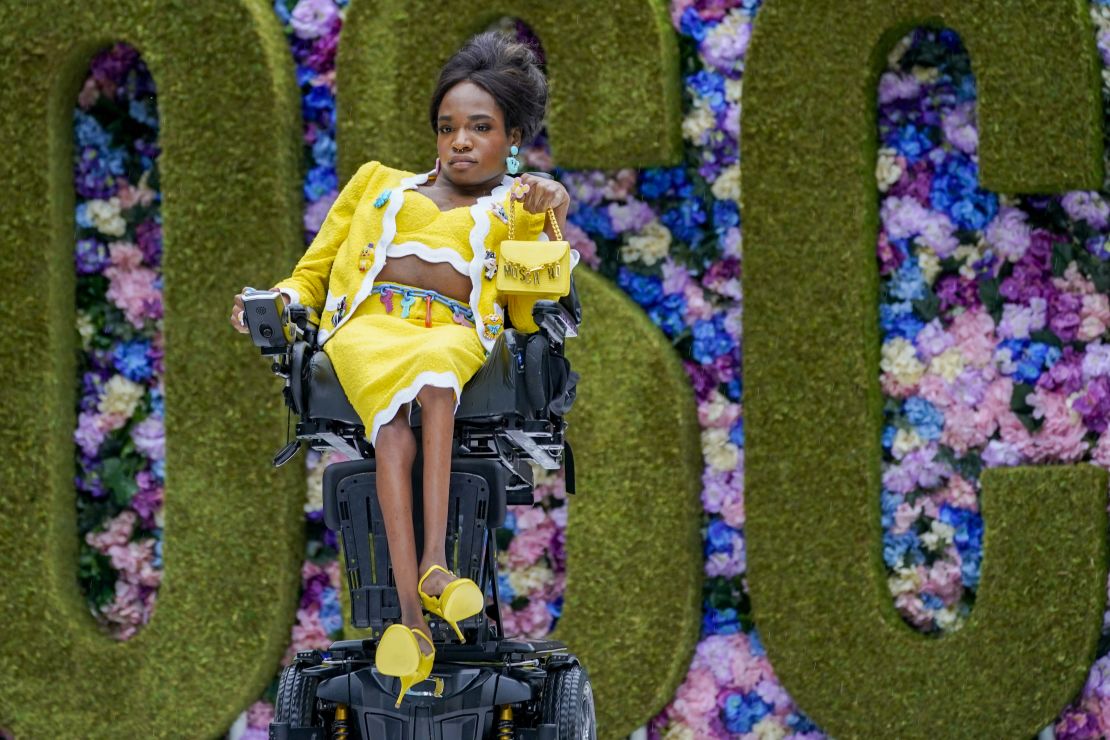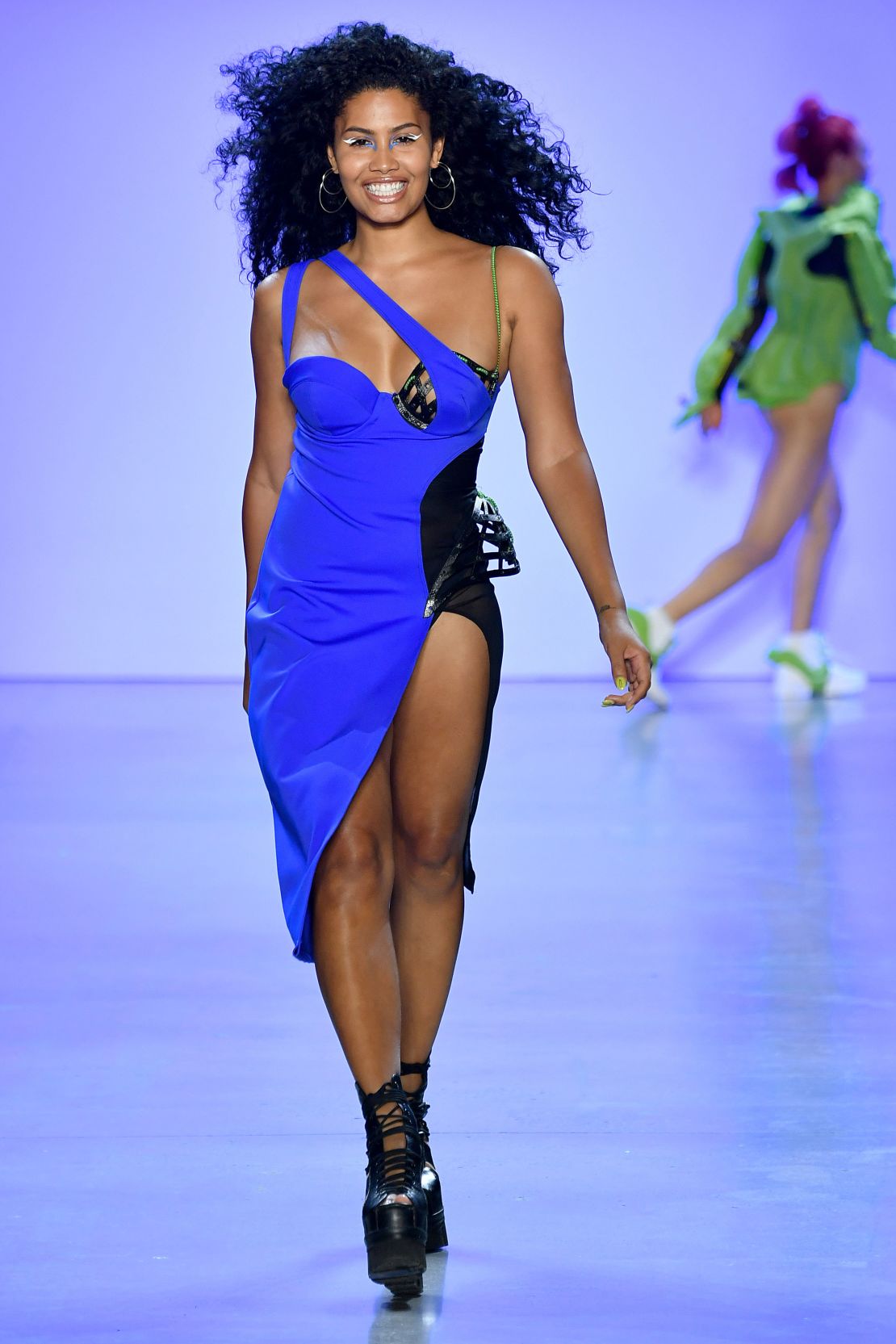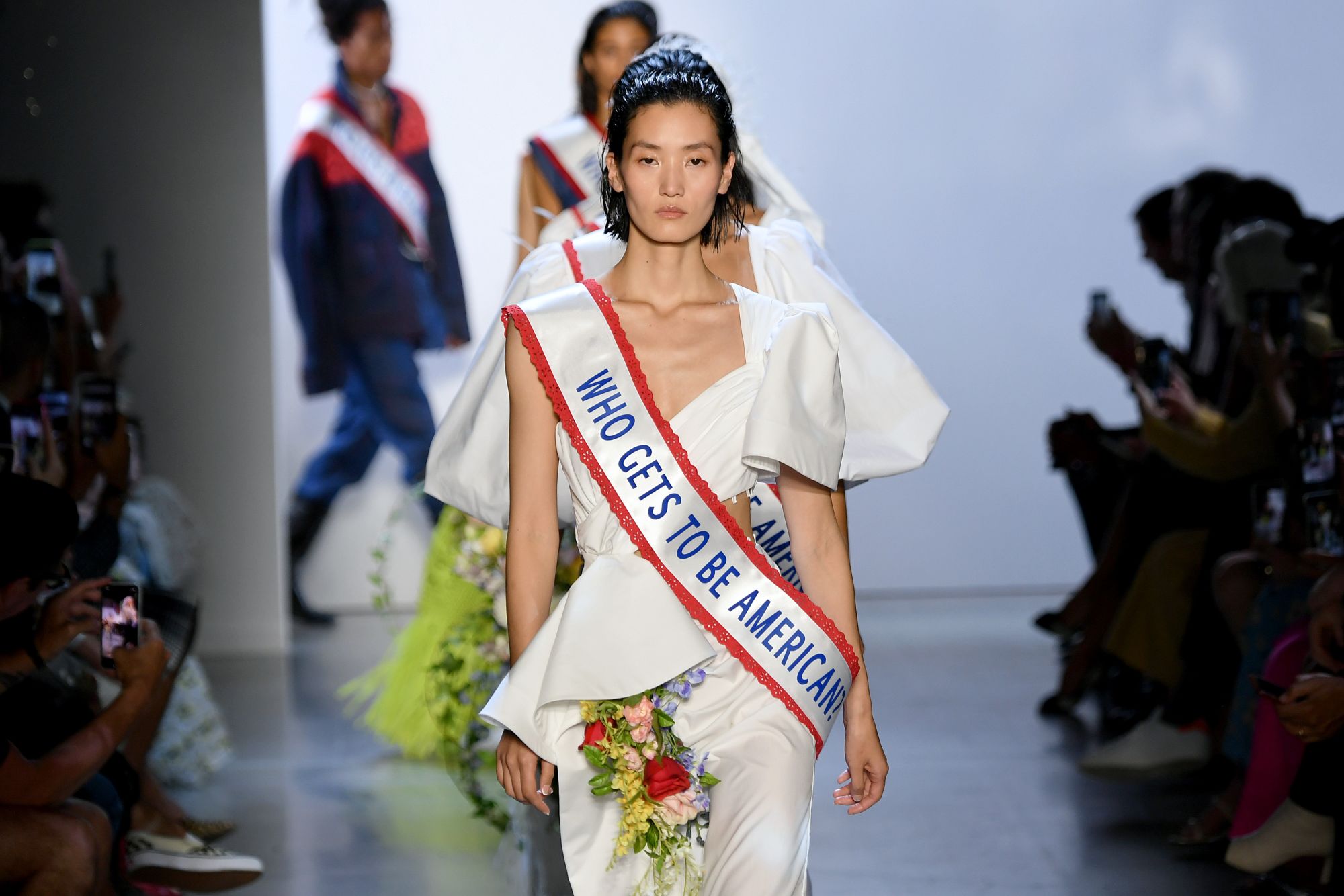Against the backdrop of a global pandemic and unprecedented political, social and environmental crises, culture in the United States has been swayed by extraordinary forces in recent years.
As a result, the fashion industry – one of the country’s largest creative sectors (apparel and footwear was valued at $1.9 trillion in the US in 2019) and among its most powerful mediums of expression – has been forced to take stock.
The industry has, of course, grappled with Covid-19’s impact on its ability to make, present and sell clothing. But designers and labels are also attuning themselves to less tangible complexities.
During the resurgence of the Black Lives Matter movement, for instance, fashion faced uncomfortable questions about its lack of diversity and elitist culture. With silence on social and political issues increasingly viewed as a form of complicity, many American fashion designers have also become outspoken campaigners. Sustainability has meanwhile forced its way up the agenda at almost every fashion business.
There’s a growing sense that the industry is teetering on the verge of a brave new era. Yet, it’s one that is still very much being defined.
This all makes the new blockbuster exhibition “In America: A Lexicon of Fashion,” at the Metropolitan Museum of Art’s Costume Institute in New York, feel especially timely. Opening on Sept. 18, and inaugurated – as is tradition – with Monday evening’s glitzy Met Gala, the show poses a crucial question at a moment of industry-wide introspection: What is American fashion today?
According to Vogue’s editor-in-chief and one of the longest-serving arbiters of American aesthetics, Anna Wintour, it is many things simultaneously.
“American fashion is a celebration of exuberance, joy, and creativity. That hasn’t changed,” said Wintour, who has chaired the Met Gala since 1995, over email: “What it has become in 2021 is a patchwork, reflecting the world we’re all living in, as seen through many different lenses.”
A patchwork of fashion
This patchwork has been on full display during New York Fashion Week, which ended Sunday evening. Across six days of runway shows and presentations, dozens of designers offered their latest take on how Americans could and should dress today.
In photos: New York Fashion Week Spring-Summer 2022
At a show by indie label Imitation of Christ, staged at St. Mark’s Church in-the-Bowery, a cast of nearly 80 performers (many of whom had spent months out of work due to Covid-19) struck poses and danced untethered in upcycled garments. After the choreographed portion of the show ended, some of the models grabbed strings of balloons and ran out onto the streets, inviting passersby to join the impromptu parade.
At Collina Strada’s show the day before, adults and children walked hand-in-hand, drenched in bright psychedelic prints that wouldn’t look out of place being promenaded down Venice Beach in Los Angeles.
Elsewhere, Nepali American designer Prabal Gurung – who in 2019 famously put runway models in sashes reading “Who gets to be American?” – posed a different question with his latest collection, “American Girl”: Who gets to be a woman?
“America has always been a woman – but she has not always been treated beautifully,” he wrote in his show notes, “What does it mean to be the most essential person in this country? What is feminine? What is American? And who gets to be it all – or none of it?”
At Italian label Moschino, long helmed by American designer Jeremy Scott, the Black transgender and disabled model, Aaron Philip, made her fashion week runway debut. After the show, she wrote on Instagram: “I hope this is the start of more and inspires & empowers more global brands at the same level to truly work towards including and normalizing disabled presences and talents in their showcases.”

For Scott, American fashion is, like the country itself, a “melting pot of style, taste and personality,” he said over email.
“Traditionally, ‘sportswear’ has been one of the main linchpins of American fashion,” he added. “I feel like over the past few decades the definition of sportswear has broadened and morphed to encompass so much more than ever before.”
A new vocabulary
Scott’s designs are among the 100 or so ensembles going on display at “In America: A Lexicon of Fashion.” The work of other American heavyweights like Tommy Hilfiger, Ralph Lauren and the late Halston will also feature, but the show extends beyond established names to spotlight some of US fashion’s brightest independent talents, including Telfar Clemens, a Liberian American designer whose eponymous label has upended just about every fashion norm, from gender binaries to runway show formats. (His tote bags, nicknamed by some as “The Bushwick Birkin,” are perpetually sold out.)
Becca McCharen-Tran, who runs the Miami-based swimwear and ready-to-wear label Chromat, will also feature. She has been an advocate for inclusivity from the beginning of her career, with an everyone-deserves-this-space mentality that is now flourishing.
“Ten years ago, things were so different,” McCharen-Tran told CNN Style via email. “It took a lot of work and intention to find plus-sized models, trans models and even models of color. Now, that’s the bare minimum expected in a runway cast. As it should be!”

Other young designers appearing in the Met’s exhibition may be in earlier stages of their careers, but this doesn’t mean they haven’t already made history. In July, Pyer Moss founder and creative director Kerby Jean-Raymond became the first ever Black American designer to feature on Paris Haute Couture Week’s official schedule.
Hosted remotely from New York, his couture show was staged at the former home of Madam C.J. Walker, a beauty entrepreneur considered to be the first Black female self-made millionaire in the United States. Jean-Raymond’s designs were an ode to Black American inventors and entrepreneurs, celebrating their historical creations with bold silhouettes referencing everything from outsized peanut butter jars to cellphones.
“I wanted to use the stage to share with other Black Americans who inspire me – and Black people who inspired me,” he told CNN after the July show. “So, I chose to make the collection a highlight reel, in a way, of many of the things we’ve contributed to society at large.”
Pyer Moss couture show honors Black inventors
Part of the Costume Institute’s mission is to “establish a modern vocabulary of fashion,” according to the exhibition’s press release. It is a mission echoed by American icon Tommy Hilfiger, who said over email: “I believe the new vocabulary will represent fashion that truly connects with you on a personal level. I see it as consumers, brands and culture coming together in a more thoughtful and intentional way.”
The Met Gala’s red carpet may prove to be the place to witness fresh additions to America’s new fashion work stock. As celebrity guests prepare to ascend the Met’s famous staircase on Monday evening, there’s an expectation that their sartorial choices will reflect fashion’s need for deeper values and explore the rich and complex identity of today’s Americans. Young, diverse, eco-conscious designers and brands will, most likely, take center stage.
“Designers are independent as never before and they have their own perspectives, sensibilities and experiences,” Wintour said. “Taken together, the community is an incredibly exciting one. It’s inclusive, sustainability-minded, intent on mentorship and connection, and determined to push important conversations forward.”


































































